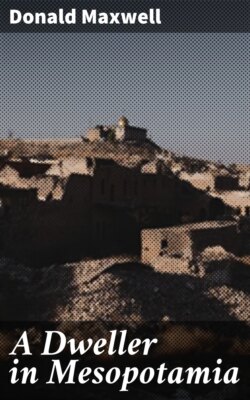Читать книгу A Dweller in Mesopotamia - Donald Maxwell - Страница 9
На сайте Литреса книга снята с продажи.
THE VENICE OF THE EAST
ОглавлениеBefore the war, when Mesopotamia was a more distant land than it is to-day, Basra was often referred to as the Venice of the East. Few travellers were in a position to test the accuracy of the comparison, and so it aroused little comment. No Venetians had returned from Basra burning with indignation and filled with a desire to get even with the writer who first thought of the parallel, probably because no Venetian had ever been there.
A few simple souls, who had delighted in the mediæval splendours of Venice, dreamed of a Venice still more romantic—a Venice with all her glories of art tinged with the glamour and witchery of the Arabian Nights, a Venice whose blue waterways reflected stately palms and golden minarets. Other souls, like myself, less simple and sufficiently salted to know that these Turnerian dreams are generally the magical accidents of changing light and seldom the result of any intrinsic interest in the places themselves—even they had a grievance when they saw the real Basra. Was this the Venice of the East, this squalid place beside soup-coloured waters? Was this the city that reveals the past splendours of Haroun Alraschid as Venice reveals the golden age of Titian and the Doges?
The first general impression of Basra is that of an unending series of quays along a river not unlike the Thames at Tilbury. The British India boats and other transports lying in the stream or berthed at the wharves might be at Gravesend and the grey-painted County Council "penny steamboats" at their moorings in the river look very much as they looked in the reach below Charing Cross Bridge.
Another thing which makes the contrast between Venice and Basra rather a painful one is the complete and noticeable absence of anything of the slightest architectural interest in this Eastern (alleged) counterpart of the Bride of the Adriatic. Whereas in Venice the antiquarian can revel in examples of many centuries of diverse domestic architecture from ducal palace to humble fisherman's dwelling on an obscure "back street" canal, in Basra there abounds a great deal of rickety rubbish that never had any interest in itself and which depends for its effect on the flattering gilding of the sun and the intangible glamour of Eastern twilight. In fact Basra might be described from an architectural point of view as a great heap of insanitary and ill-built rubbish which can look collectively extraordinarily picturesque. I have seen bits on Ashar Creek (as for instance the wooden old-tin-and-straw-mat-covered buildings shown in the centre of the sketch in the heading to this chapter) look most romantic and beautiful. Yet they will not bear any close inspection, without revealing themselves as monuments of slovenliness and dirt.
HOSPITAL HULKS AT BASRA.
In spite, however, of these drawbacks and disappointments, to those who would find Venetian character by the waters of Mesopotamia, there are two features in Basra that do undoubtedly bring Venice to mind—the boats and the canals. The bellam is a long, flat-bottomed boat not unlike a punt but narrowing at each end to a point, the stem and stern-post alike ending in a high curved piece suggestive of a gondola. These craft are propelled by two men standing one at each end like gondoliers and punting the boat along by poles. If the water is too deep to bottom it they sit and propel the boat with paddles.
The canals of Basra are multitudinous. They are artificially dug and are really more canals than creeks, although they are always called creeks. Ashar Creek is the most important of these waterways. It is generally packed with craft from big mahailas, the type of vessel shown in the sketch facing page 16, to the ubiquitous bellam. Old Basra lies up here. As I approached it one evening, with the sun going down, it looked most gorgeous. Palms and gardens on the right and the buildings of the town on the left, and boats approaching, dream-like In the sunset glow. I have sketched the effect roughly in the line drawing on page 21.
Some of the regions up these creeks are extremely beautiful. For once there was nothing disappointing even in comparison—although comparisons, as we have seen, are odious—with Venetian waterways. For once we have something that can surpass in beauty anything that Venice can show. Basra can boast no architecture, but Nature, coming to her assistance, can produce, between sunshine and water, vistas of orange-laden trees overtopped with palms and all reflected in the still canal. I have known seven kinds of fruit to overhang the banks of one creek at the same time.
